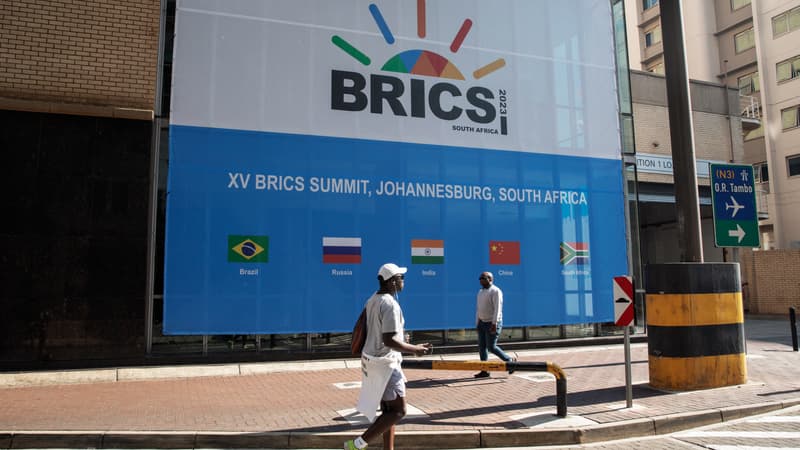What direction will the BRICS take? The group of five countries (Brazil, Russia, India, China and South Africa) currently weigh for a quarter of world GDP. And if he wants to increase his economic weight to establish himself as a true counterbalance to the Western powers, he is already struggling to speak with one voice. The integration of other countries, as well as its modalities, is, therefore, one of the thorny points that the BRICS will have to clarify during their 15th summit, organized this week in South Africa.
“This summer there was a first discussion to find out what criteria we could base ourselves on, but for the moment nothing has come of these discussions,” says Julien Vercueil, vice president of the National Institute of Oriental Languages and Civilizations (Inalco). , interviewed this Monday in BFM Business.
A dilution of power for the middle powers
But the integration of new members divides within the BRICS. On the one hand, China wants to quickly welcome new countries. The objective: “to give more echo and openness to the group”, explains the specialist. On the other hand, India, Brazil and South Africa are more reticent, fearful of a dilution of their influence.
As a result, discussions on the enlargement schedule have stalled for the time being.
For the vice president of Inalco, a possible solution is to find aggregations with variable geometry. For example, he mentions the recent integration into the BRICS development bank – renamed the New Development Bank – of three new countries: Bangladesh, the United Arab Emirates and Egypt.
According to South African officials, more than 40 countries have expressed interest in joining the BRICS. Among these countries, almost twenty have applied for official admission.
Source: BFM TV


